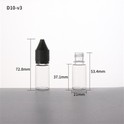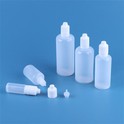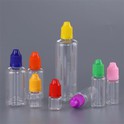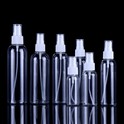What are PG and VG?
In simple terms:
PG and VG are the odorless liquids that are combined with flavor and nicotine to create e-juice.
Both PG and VG technically belong to the alcohol chemical class (despite the name, they are not intoxicating). They are classified as sugar alcohols and are included in many consumable products.
They produce vapor when heated, which allows them to be inhaled.
PG and VG are not oils, and can’t cause any of the medical issues—like lipoid pneumonia—that inhaling actual oils can.
The two fluids have a different consistency to each other and a slightly different taste.
They have distinct mouth and throat sensations when vaped.
Most modern e-liquid uses a combination of the two fluids, though the ratio can vary dramatically.
Some beginner vapes can only work with a certain level of PG and VG.
Choosing the wrong PG/VG ratio can put first-timers off so be careful to choose the right level for your equipment.
Now let’s take a look at each in more detail.
PROPYLENE GLYCOL (PG)

What exactly is it?
PG stands for Propylene Glycol, a petroleum by-product. The fluid has no odor or color and is less viscous than VG. In vaping it is used to provide a ‘throat hit’, which some users claim is similar to the sensation experienced when smoking tobacco. It also carries flavor more effectively than VG, making it the most commonly used suspension fluid for flavor concentrates and nicotine.
How is it used?
Propylene Glycol can be found in various common household items. Amongst others, these include:
Nicotine inhalers
Toothpaste and other oral hygiene products
Medical products used orally, injected or as topical formulations
Pet food (excluding cat food)
Beauty products, including make-up, shampoo and baby wipes
Is it safe?
Studies have shown that PG is safe to ingest orally, and the FDA has deemed it “generally recognized as safe” to be used as a food additive. However, most studies into the safety of propylene glycol look at ingestion, rather than consuming it in aerosol form. Of the limited studies that exist, a long-term experiment held in 1947 judged that inhaling PG was ‘completely harmless’.
A 2010 study looking at PGEs (a mixture of propylene glycol and glycol ethers) suggested an increased risk of developing respiratory and immune disorders in children, such as asthma, hay fever and eczema. However, it was judged that glycol ethers, and not PG, are the more likely cause. Looking at the evidence, it is sensible to assume that PG is safe to be inhaled, but there is a need for more comprehensive studies to confirm this.
Many misinformed scaremongering stories in the media claim that PG is a toxic substance used in anti-freeze. However, there are two types of anti-freeze: toxic and “non-toxic”. The toxic anti-freeze uses the dangerous substance referred to as ethylene glycol, which is not used in vaping. PG-based anti-freeze is used in food-processing machinery where toxic anti-freeze could be problematic.
While PG is regarded as safe for humans and is generally regarded as safe as a food additive for dogs, it has been linked to Heinz body anemia in cats. Be careful when vaping around cats, particularly if you use PG in your e-liquid.
What should I be aware of when vaping PG?
Some people find a high level of PG irritating to the throat. True allergies to PG are rare, but have been reported. If you find yourself coming out in a rash or suffering other unpleasant reactions after using PG-based e-fluid, you may have a more common mild sensitivity to PG, and should look at using high-VG juice instead. Many vendors offer this option.
The most common side effects of using e-liquid containing propylene glycol are symptoms of dehydration, like dry mouth, sore throat, and increased thirst. It is advised to drink more water and liquids than usual for the first few weeks of using your e-cigarette. If hydrated properly, these symptoms usually last anywhere from a few days to a week as the body gets used to the propylene glycol. Be aware that any unusual reactions could be side effects from quitting smoking, and not necessarily because of the PG.
VEGETABLE GLYCERIN (VG)

What exactly is it?
VG stands for Vegetable Glycerin. It is a natural chemical, derived from vegetable oils, so is safe for vegetarians. It is commonly used in e-liquid to give a ‘thick’ sensation to vapor. VG has a slightly sweet taste and is considerably thicker than PG. Vegetable Glycerin provides a much smoother throat hit than Propylene Glycol, making it more suitable for sub-ohm vaping. While nicotine and flavorings are commonly suspended in PG, some vendors are offering a VG alternative, to enable 100% VG mixes.
What is it used for?
Again, it can be found in numerous medical, food and personal care products:
Sweetener as sugar replacement
Beauty products, such as make-up, mousse, bubble bath, aftershave, and deodorant
Pet food
Soap and hand cream
Food such as baked goods, to increase moisture
To provide a thickening agent for certain medicinal creams, capsule pills, and jellies
Toothpaste and other dental care products






